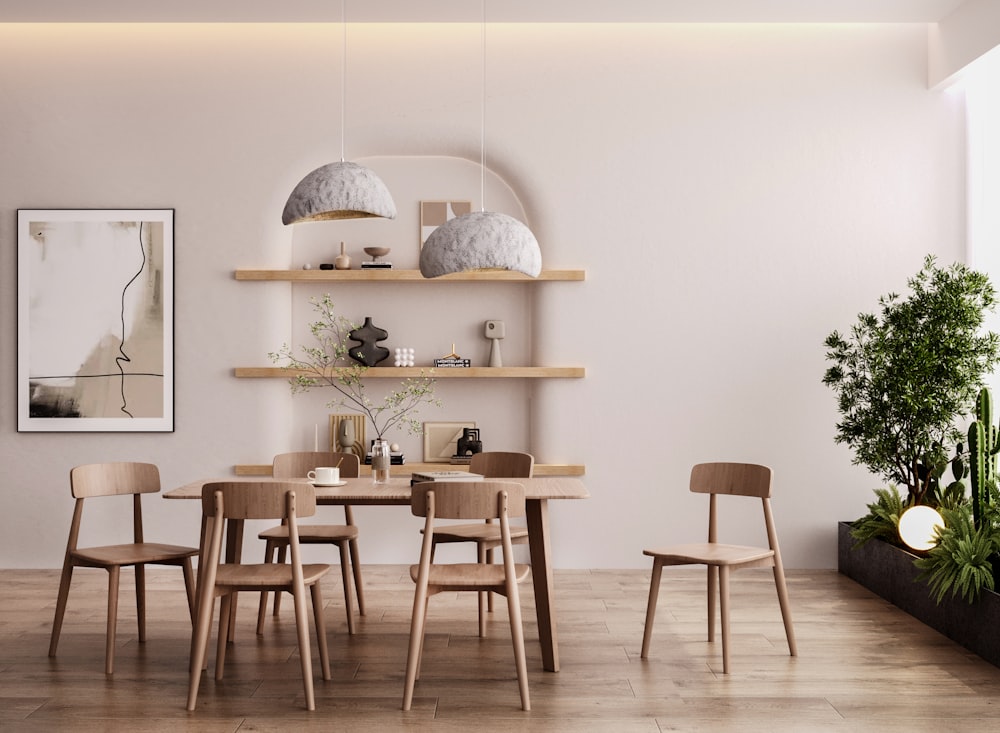Introduction to Wabi Sabi
In a world that often glorifies perfection and the latest trends, the Japanese philosophy of Wabi Sabi offers a refreshing perspective. Rooted in Zen Buddhism, Wabi Sabi celebrates the beauty of imperfection, transience, and the natural world. It invites us to find serenity in the simple, the aged, and the imperfect. When applied to interior design, Wabi Sabi creates spaces that are tranquil, warm, and deeply authentic.
The Core Principles of Wabi Sabi
Photo by Annie Spratt on Unsplash
Simplicity
At the heart of Wabi Sabi is simplicity. This principle encourages the stripping away of excess to reveal the essence of an object or space. In design, this translates to clean lines, uncluttered spaces, and a focus on functionality. The goal is to create environments that are serene and purposeful, where every element has its place and meaning.
Imperfection
Wabi Sabi teaches us to embrace flaws and irregularities. Cracks, chips, and wear are not seen as defects but as unique characteristics that tell a story. In interior design, this means appreciating handmade items, weathered surfaces, and the natural patina that develops over time. These elements add depth and authenticity to a space, making it feel lived-in and loved.
Appreciation for Natural Materials
Natural materials play a crucial role in Wabi Sabi design. Wood, stone, clay, and textiles like linen and cotton bring a sense of earthiness and warmth. These materials are valued for their intrinsic qualities and how they age gracefully. By incorporating them into your home, you create a connection to nature and a sense of timelessness.
Wabi Sabi in Interior Design
How to Incorporate the Style into Your Home
Photo by Kam Idris on Unsplash
Incorporating Wabi Sabi into your home doesn’t require a complete overhaul. Small, thoughtful changes can make a significant impact. Here are some practical examples and tips:
- Choose Handmade Over Mass-Produced: Look for artisanal items that show the maker's hand. These pieces often have small imperfections that add character and charm.
- Embrace Natural Light: Allow natural light to fill your space. It highlights textures, creates a calming atmosphere, and connects the interior with the outdoors.
- Use a Neutral Color Palette: Opt for colors that reflect nature—soft whites, muted grays, earthy browns, and greens. These hues evoke calm and balance.
- Incorporate Vintage and Upcycled Items: Older pieces with a history add a sense of continuity and respect for the past. They also align with sustainable living practices.
- Focus on Texture and Patina: Mix different textures and celebrate aging. A worn leather chair, a reclaimed wooden table, or a linen throw can all contribute to a Wabi Sabi aesthetic.
The Impact of Wabi Sabi on Contemporary Design
In recent years, there has been a growing trend towards embracing imperfections and authenticity in modern decor. Wabi Sabi challenges the conventional ideals of luxury and perfection, offering an alternative that feels more human and relatable. This shift reflects a broader cultural movement towards mindfulness, simplicity, and sustainability. Designers and homeowners alike are finding value in spaces that tell a story and evoke a sense of peace and belonging.
Wabi Sabi and Sustainability
Wabi Sabi and sustainable living share many common values. Both promote mindful consumption, the use of natural and long-lasting materials, and a respect for the natural world. By choosing quality over quantity and valuing what we already have, we reduce waste and create homes that are environmentally conscious. This alignment makes Wabi Sabi not only a beautiful design choice but also an ethical one.
Conclusion
Wabi Sabi invites us to see beauty in the imperfect, the transient, and the simple. By embracing this philosophy in our homes, we create spaces that are not only aesthetically pleasing but also deeply meaningful and serene. As you embark on your journey to incorporate Wabi Sabi into your interiors, remember that it’s less about adhering to strict rules and more about cultivating an appreciation for the life and stories within our spaces. Embrace the imperfections, cherish the natural materials, and create a home that reflects the tranquil beauty of Wabi Sabi.



